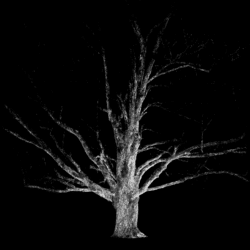Rumack v. M.N.R., 90 DTC 6271 FCTD
Charities that have used “Cash for Life” lotteries as a method of fund raising will be pleased with the recent decision of the Federal Court in Rumack. In that case, Miriam Rumack won $1000 a month for life, guaranteed for 20 years, in a Cash for Life lottery offered by the Ontario Association for the Mentally Retarded (the Association). In order to finance the prize, the Association purchase the annuity for Mrs. Rumack from Sun Life of Canada. The Association retained ownership but named Mrs. Rumack as the annuitant Revenue Canada asserted that the annuity payments were taxable to Mrs. Rumack and she objected. On appeal, the Court held that the payments were not taxable. In the first place, the Court concluded that, while the payments constituted an annuity that normally would be taxable under paragraph 56(1) {d) of the Income Tax Act, the payments were not taxable in this case because the source of the income was still owned by the Association, and the Association was exempt from tax. Further, the Judge pointed to ss52(4) which provides that “Where any property has been acquired … as a prize in connection with a lottery scheme, he shall be deemed to have acquired the property at a cost to him equal to its fair market value at that time”. He concluded that, regardless of how the prize was funded, Mrs. Rumack had won the money as part of a “lottery scheme” and therefore the payments were exempt from taxation.
The Queen v. Burns
The taxpayer was not as lucky in another recent decision issued by the Federal Court. In The Queen v. Bums (FCA) 90 DTC 6335, the Federal Court of Appeal dismissed the taxpayer’s appeal. It supported the Trial Division’s conclusion that contributions made by the taxpayer, a dentist, to the Canadian Ski Association through one of its divisions in Southern Ontario were not payments made without consideration or without material benefit. They were therefore not true “gifts”. In this case, Dr. Bums made donations to the Canadian Ski Association at a time when his daughter was participating in the program and was training with them with the objective of her being selected for the Canadian National Ski Team. At trial, the trial judge found that the contributions were made by Dr. Bums for the purpose of securing a material advantage for his daughter and that was considered to be a benefit Therefore, he did not have the intent to make a gift, but rather expected to receive a benefit as a result of making the donation. Dr. Bums had agreed that he would not have made the contributions had his daughter not been part of the training squad.
First Place Hamilton v. Corporation of the City of Hamilton
Turning to another taxing statute, the Assessment Act imposes real estate taxes on property owners; however the Act specifically exempts schools, hospitals and churches from the taxes, and section 3(12) allows a tax exemption for other organizations meeting a public need. Specifically, the section exempts:
Land of an incorporated charitable institution organized for the relief of the poor; or … any similar incorporated institution incorporated on philanthropic principles and not for the purpose of profit or gain, that is supported, in part at least, by public funds, but only when the land is owned by the institution and occupied and used for the purposes of the institution.
A recent decision of Lane J. of the Supreme Court of Ontario will be of particular interest to organizations that provide specialized low-cost housing. The project at issue in this case consisted of a 452-unit high-rise apartment building. It had two floors of commercial space, a third floor of administration and other facilities, and two levels of underground parking. The remaining 23 floors were operated by First Place (a nonprofit corporation) as rent-geared-to-income and subsidized apartments for low-income seniors and handicapped persons. Normally, such projects are taxed as regular apartment buildings. Lane J., however, departed from tradition and held that the portion of the building that was used for the subsidized apartments was exempt from the tax under the “second branch” of section 3(12) of the Assessment Act. Lane J. ruled that First Place’s activities “were philanthropic to the extent that housing is being provided at or below cost primarily to persons who require the subsidy provided by the applicant’s foregone profit and the government funding.” Further he ruled that the application was not barred because some tenants paid rents at levels that could be found in commercially operated apartments (though all tenants earned less than the CMHC ceilings) as, in his view, “an organization … can be conducted upon philanthropic principles without being confined to catering to the needs of the poorest of the poor”.
If this decision is not overturned, it will assist landlords who provided subsidized housing to the elderly and disabled and should encourage expansion of such services.
Draft Legislation
On July 13, 1990 the Department of Finance released draft legislation relating to the Income Tax Act and related statutes. The draft legislation and accompanying technical notes include not only a significant number of technical amendments, which will clarify or correct the application of existing income tax provisions, but also the legislation relating to the February 20, 1990 Budget and other announcements that have been made in the past. The draft legislation relating to charities covers the change in the cultural property area proposed in the 1990 Budget, the government announcement on May 25, 1990 relating to the ability of certain national arts service organizations to issue charitable donation receipts, and technical amendments relating to registered charities and charitable donations receipts.
In the February 20, 1990 Budget, Resolution 1 of the Notice of Ways and Means Motion to Amend the Income Tax Act provided that the value of certified cultural property donated after February 20, 1990 to a designated Canadian institution or public authority would be determined by the Canadian Property Export Review Board which would determine the tax credit or deduction available to the donor in respect of such property. This change was accomplished by the insertion of subsection 118.1(10) of the Income Tax Act effective for gifts made after February 20, 1990. Likewise, subsection 32(1) of the Cultural Property Export and Import Act will be amended to provide that the Review Board will be given the right to determine the fair market value of the cultural property in question. Furthermore, subsection 32(5) of this Act will allow the Review Board to reassess the fair market value of the gift if additional information becomes available subsequent to the initial determination of the fair market value. In addition, paragraph (k) is proposed which would be added to subsection 241(4) of the Act to allow the Minister of National Revenue to communicate information derived under the Act to an official of the Department of Communications or a member of the Canadian Cultural Property Export Review Board but only for the purposes of administering the provisions of section 32 (determination of the criteria and fair market value of the object) and 33 (the provision of the certificate to allow the amount of the market value of the cultural property to be deducted or the amount in respect of which a tax credit is given) of the Cultural Property Export and Import Act. A new subsection 33(2) of the Cultural Property Export and Import Act provides for the exchange of information for purposes of administering the provisions of the Income Tax Act in this connection. Clearly these provisions, when enacted, will reduce the abuses which Revenue Canada believes have been associated with the gifting of cultural property.
Amendments are proposed to sections 39, 110.1, 118.1, 188 and 207.3 as they relate to charities and charitable donations receipts. These amendments are principally to ensure consistency of language or to reflect the renumbering of the Cultural Property Export and Import Act.
In order to implement the government announcement on May 25, 1990 whereby certain national and service organizations will be allowed to issue charitable donation receipts, section 149.1 of the Income Tax Act will be amended by inserting subsections (6.4) and (6.5). New subsection 149.1(6.4) of the Act will provide that an organization that:
• has been designated by the Minister of Communications as a national arts service organization;
• has as its exclusive purpose and exclusive function, the promotion of arts in Canada on a nation-wide basis;
• is resident in Canada and was formed or created in Canada;
• has complied with prescribed conditions, and
• has made application for registration on the prescribed form to the
Minister of National Revenue may be registered as such by the Minister, subjecting it to those provisions of the Income Tax Act that apply to registered charities, including the ability to issue charitable donation receipts. The prescribed conditions will be contained in the Income Tax Regulations; the criteria are outlined in the Technical Notes and cover such items as the non-profit nature of the organization, the arts covered, the use of funds, the arm’s-length nature of the organization as well as the types of activities that can be carried on by such an organization.
Proposed subsection 149.1(6.5) will provide that the Minister of Communications may revoke the designation of an organization as a national arts service organization under certain specific circumstances and upon such revocation the organization will cease to be in compliance with the provisions of the Income Tax Act for its registration as such an organization under the Act.
The provisions relating to national arts service organizations are applicable after July 13, 1990 except that where an application is made to the Minister of National Revenue before the provision is enacted and the Minister of National Revenue has accepted the application as meeting all the requirements of the new provision, the organization shall be deemed to become registered on the date that the application for registration is made or a later date if so specified in the application.
The other two amendments relate only to private charitable foundations and one is of a purely housekeeping nature. Subparagraph 149.1(1Xe)(1)(ii) provides that a “non-qualified investment” of a private foundation includes a share of the capital stock of a corporation (other than an excluded corporation) other than ” … a share that would be a qualifying share within the meaning assigned by subsection 192(6) if that subsection were read without reference to the words ‘after June 30, 1983 and before 1987’… “. The date reference is no longer relevant as subsection 192(6) has been amended. The proposed amendment replaces the existing date reference with the words “issued after May 22, 1985 and before 1987”, these words being consistent with the present wording in that subsection. However, the other change, not of a “housekeeping” kind, is that the definition of “excluded corporation” will be amended to include “a corporation all of the issued shares of which are held by the foundation”. As a result, the provisions in section 189 of the Income Tax Act that impose a penalty tax where the return on non-qualitied investments is not sufficient will not apply where the charitable foundation in question owns all of the shares of the corporation. This provision will be applicable to taxation years commencing after 1983 so as to coincide with the effective date of the penalty provisions in secion 189 of the Income Tax Act.
Interpretation Bulletins
A revised bulletin, Interpretation Bulletin 90-407R3 relating to the disposition of Canadian cultural property after 1987 was released in late April of this year. Interpretation Bulletin IT-525 was also released. This interpretation bulletin deals with various tax matters relating to performing artists such as musicians, actors, or other performers. (Interpretation Bulletin IT-504 [visual artists and writers] outlines information on issues concerning taxpayers in these categories.)
MARY LOUISE DICKSON
Dunbar, Sachs, Barristers and Solicitors, Toronto
LAURENCE C. MURRAY
Peat Marwick Thome, Chartered Accountants, Toronto


